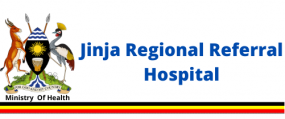Introduction
The goal of Uganda’s 2020/21-2024/25 Health Sector Development Plan (HSDP) is to accelerate the movement towards Universal Health Coverage with focus on Primary Health Care to improve health, nutrition and wellbeing of the population by 2025. Among the fundamental constraints for realizing the HSDP is sub-optimal performance of the health systems mainly due to limited capacity and lack of resources available to the health sector and particularly the RRHs. The lack of strong central-district linkages compromises MoH effectiveness in rolling-out initiatives to improve health service delivery and maintain consistency with the national goals and standards.
To maximize effectiveness and efficiency, MoH is proposing RRHs to serve as a regional tier of structures to bridge the gap between the district and central levels of Uganda’s health system. Currently, RRHs exist each region of the country, are focused primarily on providing specialized medical care in their own facilities and responding to ‘self-referred’ cases that district-level facilities should be capable of handling. RRHs have limited capacity and unclear mandate to support district health facilities in this more expanded vision of MoH. Thus, fortifying their technical and managerial capacity and better clarifying respective roles and responsibilities within the health system is essential to the success of this new approach.
The Pilot Phase ( 1st Apr 2020 – 30th Sept 2021)
Jinja Regional Referral Hospital G2G mechanism was the pilot support project through Government-to-Government (G2G – US Government to Uganda Government) assistance to Jinja Regional Referral Hospital (JRRH) is aimed at assisting the Regional Referral Hospital (RRH) to:
(i) pilot the concept of RRHs as centers of excellence in HIV service delivery; and
(ii) promote learning and adaptation to inform successful scale-up of the pilot. Specifically, the support will contribute to the following outcomes:
- Improved availability and quality of HIV services
- Strengthened systems to improve sustainability and accountability
- Collaborating, learning, and adapting (CLA) throughout the life of the Project to support its success and any follow-on programming.
This mechanism is one of USAID/Uganda’s initiatives to transition HIV programming to local organizations. Jinja referral hospital is currently in its initial stages of implementing the G2G activities. The overall goal of the activity is to implement comprehensive HIV/AIDS treatment, care, and prevention program. Key results areas under this program will include:
- Increased availability, accessibility, and quality of HIV/AIDS services
- Increased uptake/use of HIV/AIDS services
- Improved target population health through increased access to comprehensive HIV/AIDS services
- Increased uptake and use of HIV and AIDS services as an outcome of quality improvement
- Improved organization and management of service delivery
- Maintain PEPFAR specific data management, analysis, and reporting systems
- Increase access to and use of data to support strategic and program management decisions
- Enhanced targeted health communications to increase identification, linkage, and retention of PLHIV in treatment and viral suppression across different populations group.
The pilot phase was implemented in two Regional Referral Hospitals; Jinja Regional Referral Hospital and Mbarara Regional Referral Hospital.
USAID/ Jinja Regional Referral Hospital Strengthening Activity (1st Oct 2021 – 30th Sept 2026)
Purpose
The purpose of the 5 year USAID’s assistance to Jinja Regional Referral Hospital was to strengthen the RRH’s capacity to deliver comprehensive high-quality HIV/AIDS and TB services as well as a select set of reproductive, maternal, neonatal, adolescent and child health (RMNACH) and Family planning (FP) services while serving as a hub and center of excellence for oversight, training and supervision of health service delivery in East Central Region.
USAID’s support included Government to Government (G2G) assistance to Jinja RRH as well as wrap around technical assistance from other USAID-IPs. The wrap around assistance is designed to;
- reinforce the JRRH in meeting its programmatic and accountability commitments under G2G activity,
- position the RRH to reach the level of sustainability where it can meet its responsibilities independent of external donor assistance, advancing Uganda along its journey of self-reliance.
Activity Results, Hierarchy, Theory of change and Assumptions
As indicated above, the overall goal of USAID’s assistance for JRRH was to support the Government of Uganda in its efforts to transform RRH’s into centers of excellence for medical care and public health response.
Three outcomes contributed to achieving this purpose;
- Improved availability and quality of HIVAIDs, TB and selected RMNACH/FP services.
- Strengthened internal administrative and management systems and accountability processes.
- Strengthened capacity of JRRH to serve as a coordination hub for technical support supervision and mentorship to lower- level facilities within the East Central Region.
The project closed on 28th May 2025 following the Executive order signed by H.E Donald Trump.
